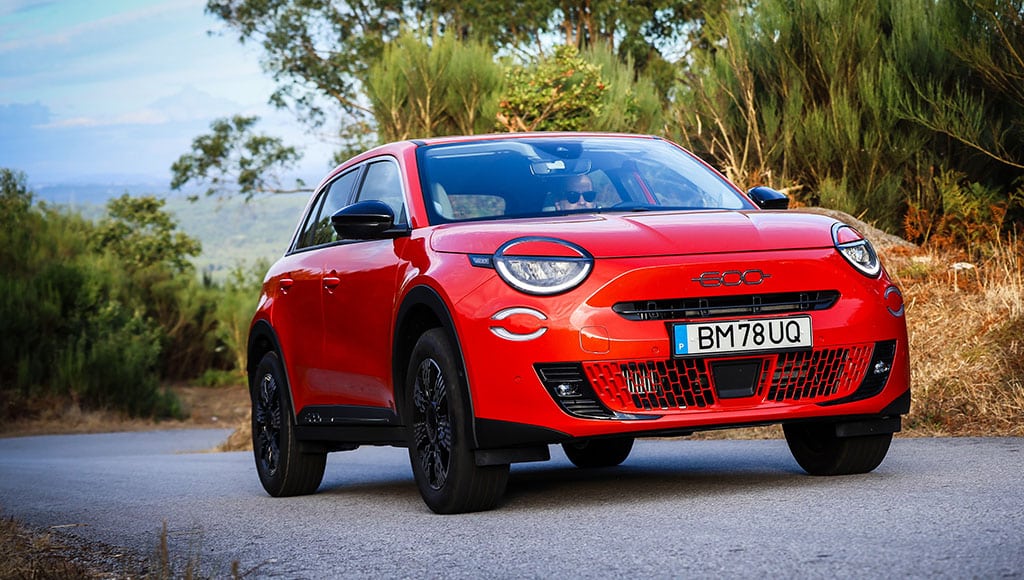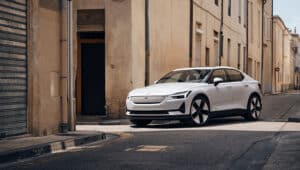The Fiat 600 is available both as a BEV and a Hybrid. But which one makes more sense?
There is no better way to compare an electric car against one with a combustion engine than using, well, the same car – only with different propulsion systems.
I had the chance to do that with the Fiat 600. Because the Stellantis Group’s strategy is to have as many models as possible available with as many propulsion systems as possible, the likes of Peugeot, Citroën, Opel, Fiat or Jeep find themselves with a catalogue of one car fits all: electric, hybrid and, sometimes, pure petrol or diesel.
The secret is in the development, by making sure the platform can accommodate all those different solutions. The 600 is the first Fiat developed from scratch under the Stellantis Group banner, and one of the reasons why Fiat saw with good eyes the merger with the PSA Group was precisely this kind of synergies.
The former Fiat group – Fiat Chrysler Automobiles – was behind in electrification and needed to speed up a whole new range of products that were in trend with the market.
When I wrote about the electric 600e, I said: “As a daily companion, the 600e is quite a nice choice. Comfortable, practical, easy to use, still small enough for city driving (4.17m) but with sufficient space for the supermarket run or a weekend away with the kids and the bags. The 385 litres of the boot are good, if not excellent, but rivals do no better.”
All of that is still absolutely true about the 600 Hybrid. Actually, it is not really a full-hybrid but a mild-hybrid instead, or MHEV, meaning it’s not meant to run on electricity alone. It uses a 1.2 litre, three-cylinder turbo petrol engine, mated to a six-speed double-clutch gearbox. The gearbox packs a 48v, 29 horsepower electric motor inside, which, in turn, is powered by a teeny-tiny 0.89kWh battery.

What is really fun is that this smallest of batteries – the size of a pocket calculator – can propel the 600 in full electric mode and under 30km/h for a whopping … wait for it: 1 km! Yes, one which is pretty incredible actually.
The hybrid module is not there to make the 600 a zero emissions car, hence the MHEV moniker, but to help the petrol engine at every opportunity with its torque and, therefore, lower the fuel consumption. Fiat say it can achieve a 15% reduction compared to a 600 that would run exclusively on petrol.
The electric 600e starts at €36,000. The 600 Hybrid at €24,000. Is there anything else left to say about which one makes more sense?
The electric motor has another trick up its sleeve too. Something called the e-creeping function, which shuts down the petrol engine in parking or other small manoeuvring situations.
The car I drove was the 136-horsepower version, but there is a 100-horsepower available as well. The difference in price between the two is just €1,500 and some features, like driving modes and extreme regeneration, are only available on the most powerful option. And for the price, it just seems to make more sense to get the full 136hp.
I drove it mostly around town, making the most out of the hybrid abilities. The 600 achieved an average fuel consumption of 6.1 litres. Had I driven more motorway kilometres, that would go up by around one litre, as the relevance of the electric motor would have been diminished, and the combustion engine would have made most of the work by itself.
Let’s not kid ourselves. The 600 Hybrid is mostly a petrol 600 with a little help from its friend, but Fiat have engineered things in a way that it really maximizes the abilities of both the combustion engine and the electric motor.
Being a hybrid makes sense for a small(ish) urban SUV and the market – even those like me who don’t see the electric car as the only possible future – demand that we lower our emissions when using personal means of transport. The 600 Hybrid does that.
Also relevant, I still think it looks great – especially in white or orange, as seen in the pictures. I have seen it in every colour available and these are my favourite. Feel free to disagree, of course.
According to Fiat, the 600 Hybrid, with 100hp, is €12,000 cheaper than the 600e. €12,000! The question I posed in the subtitle of this text ends there. Yes, to run, it will always be more expensive, with the difference being more or less significant depending on where the 600e is recharged, but take depreciation into account, and the hybrid wins big again.
Besides, almost everything I liked about driving the 600e was unrelated to the propulsion system – bar the smoothness and quietness, two traits where electric cars are kings – so no points for guessing which version I preferred.
The 600 Hybrid asks no compromises from its owner, has more than double the real-world range and you can fill it up in five minutes. It’s fast enough and frugal as intended. In other words, the winner.
Motoring Trade | Business, Services, Marketplace – click here


























